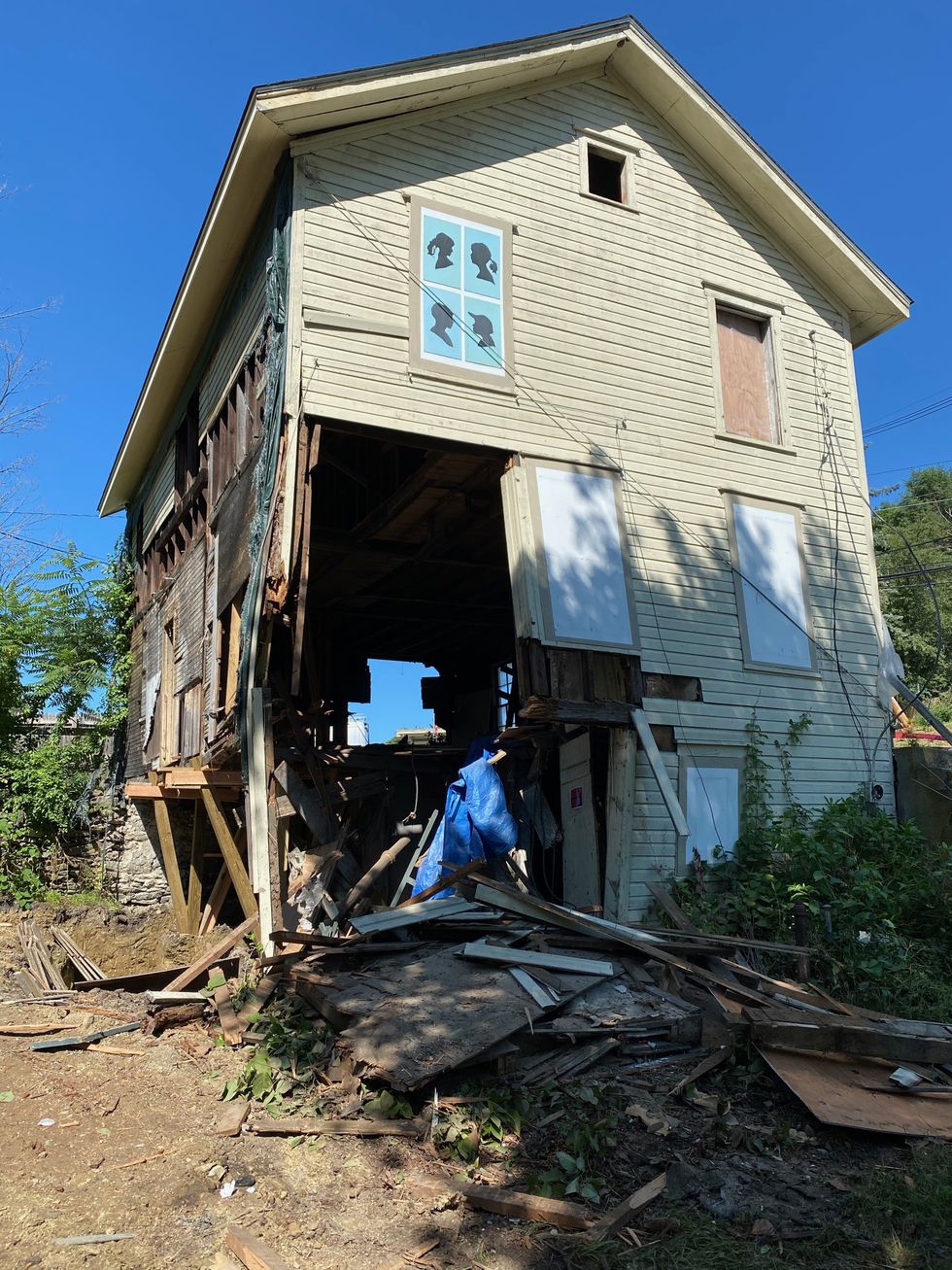ANCRAM — Over a decade’s worth of the Ancram Preservation Group’s (APG) renovation efforts came crashing down in July when a car drove straight through the historic Stiehle House. Though the building itself has since been demolished after being deemed unsafe, the group has been entertaining the idea of rebuilding, though whether it’s feasible remains to be seen.
As published on its website, www.ancrampreservation.org, APG formed in the fall of 2000, during which time there were quite a few derelict historic buildings in the town, according to APG President Kit White. Among its earlier projects, the group purchased and restored the historic Simons General Store on County Route 7, in 2002. Once sufficiently restored, White said the group wanted to sell it and put it back in use. However, they first needed to address the derelict buildings surrounding the historic general store, including the Stiehle House on Route 82 and the “Tinsmith” house across the street.
Focusing on the Stiehle House, the group purchased a facade easement to give them the right to fix the outside of the building, and then acquired a side easement for the right to purchase the building. They eventually purchased the Stiehle House six years ago and sold Simons General Store with the intent of using the funds from that sale to renovate the Stiehle House.
White explained that Ancram’s center is bracketed by the three historic buildings, and while he claims the Stiehle House is not really architecturally significant, “our feeling was it was the placement of the house that made it important because it gave some shape to the town.”
APG has been making preparations to renovate the building for more than a decade, so it could be used for office space and as an internship building for the Ancram Opera House. Building plans for the renovation were filed last winter and APG was ready to proceed in March when their plans were interrupted by the COVID-19 pandemic. They had just started the work this summer when they received devastating news about a vehicle that plowed into the structure on Saturday, July 18.
Ancram resident Joseph Martino was reportedly traveling southbound on Route 82 in the early morning hours when he missed making a turn. His vehicle drove through the building, causing significant damage; he was later charged with drunk driving and a slew of related charges.
Between the cost of purchasing the building and what renovations had already been completed, APG had invested roughly $60,000 into updating the Stiehle House. Prior to the crash, White said the Ancram Opera House had applied for a grant from the state to develop the Stiehle House into a mixed use building. Taking the Ancram Opera House’s interest into account, the crash represented not just the loss of the building, but also the potential for funding and for having the building be put back into use for cultural activity in the town, said White.
APG members spoke with Chad Lindberg, the structural engineer that Ancram Building Inspector Edward Ferratto hired to evaluate the building, as well as with Mark Day, an engineer from Day & Stokosa Engineering P.C., to get a preliminary ruling as to whether the building could be saved.
White said he was informed by both Lindberg and Day that the Stiehle House could be saved.
However, Ferratto deemed the building unsafe based on a structural report he received from Taconic Engineering and declared that it had to be demolished.
In spite of its belief the building could be saved, APG complied with Ferratto’s orders, and the Stiehle House was demolished in August.
“The decision that I made was based on how unsafe the building was, and I had based that on a structural engineer’s report that I received from Taconic Engineering,” Ferratto said. “Basically it said that the building’s support was heavily damaged by the accident and was in imminent danger of collapse.”
White said the group is still assessing the situation and awaiting to learn what the insurance settlement will be. Having spent about $25,000 on demolition costs, he said APG is also assessing its funds going forward.
“I think that this kind of historic preservation is always an uphill battle,” White said. “We’ve really been on our own in this battle and it would be nice if there was more support from the town.”







 Submitted
Submitted







